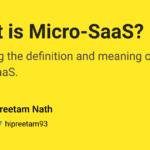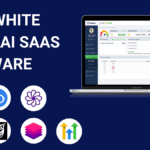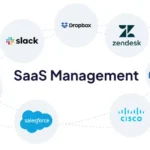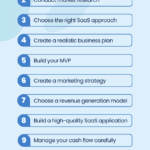BaaS (Backend as a Service) provides ready-made backend infrastructure, while SaaS (Software as a Service) delivers software applications over the internet. Businesses today often face choices between BaaS and SaaS for their tech needs.
BaaS offers developers a streamlined way to manage backend services without handling server-side infrastructure. SaaS, on the other hand, allows users to access software applications through a web browser, eliminating the need for local installations. Both models aim to simplify operations and reduce costs, but they serve distinct purposes.
BaaS is ideal for developers needing backend support, while SaaS suits end-users seeking accessible software solutions. Understanding their differences helps businesses make informed technology decisions, enhancing productivity and efficiency.
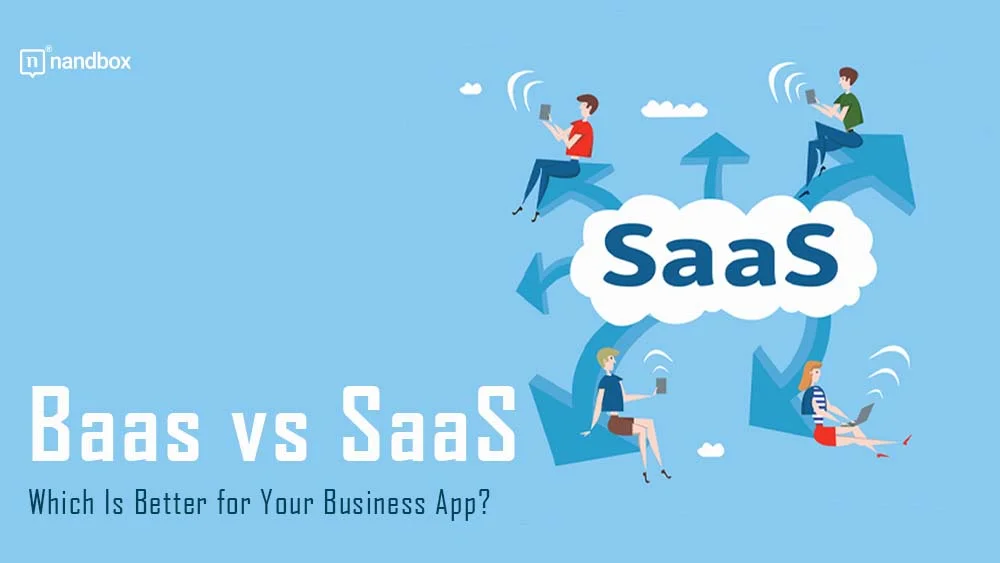
Credit: nandbox.com
Introduction To Cloud Computing
Cloud computing has changed the tech world. It offers many benefits to businesses and users. Many companies now use cloud solutions. These solutions are easy to use and cost-effective.
Businesses can save money with cloud services. They do not need to buy expensive hardware. Cloud solutions also offer scalability. Companies can grow without worrying about their IT infrastructure.
There are three main cloud service models. These are IaaS, PaaS, and SaaS. Each model offers different features and benefits.
| Service Model | Description |
|---|---|
| IaaS | Infrastructure as a Service. Provides virtualized computing resources over the internet. |
| PaaS | Platform as a Service. Offers hardware and software tools over the internet. |
| SaaS | Software as a Service. Delivers software applications over the internet. |

Credit: www.linkedin.com
Breaking Down Baas
BaaS stands for Backend as a Service. It offers ready-made backend solutions. Developers use BaaS to focus on frontend work. BaaS handles server management, database, and authentication. It saves time and reduces workload. Using BaaS, apps get built faster. It offers scalability and reliability.
Choose BaaS for rapid app development. It suits startups and small teams. BaaS is ideal for apps with standard features. It reduces backend complexity. Pick BaaS when time and budget are tight. It helps in managing limited resources. BaaS also offers easy integration with other services.
Exploring Saas
Software as a Service (SaaS) lets you use software via the internet. You do not need to install or manage it. SaaS is easy to access from any device with internet. Many businesses use SaaS for its simplicity. It often costs less than traditional software. SaaS providers handle updates and security. This means less work for your team.
Businesses save money on hardware and software costs. SaaS is easy to scale as your business grows. It offers automatic updates, keeping your tools up-to-date. SaaS helps teams work together from different places. Data is stored securely in the cloud. You can access it anytime, anywhere. SaaS often has good customer support. This helps solve any issues fast.
Comparing Baas And Saas
BaaS stands for Backend as a Service. It provides backend services like databases, authentication, and cloud storage. Developers use BaaS to focus on front-end development. SaaS stands for Software as a Service. It delivers software over the internet. Users access SaaS applications through web browsers. SaaS requires no installation or maintenance. BaaS supports developers, while SaaS supports end-users. Both models offer scalability and cost savings.
BaaS helps developers build apps faster. It offers tools and libraries. Developers use these to integrate backend services. SaaS offers a seamless user experience. Users access software anytime, anywhere. They only need an internet connection. SaaS platforms are easy to use. They often come with customer support. Both models aim to improve productivity.
Cost Implications
BaaS and SaaS have different cost structures. BaaS often involves pay-as-you-go models. This means you pay for what you use. SaaS usually has subscription-based pricing. You pay a fixed monthly or yearly fee. Both models can be cost-effective. It depends on your usage and needs.
Choosing between BaaS and SaaS affects long-term costs. BaaS can be cheaper if your usage is low. SaaS might be better for predictable expenses. Both options offer benefits. Carefully consider your business needs. Make sure to evaluate the total cost over time.
Integration And Scalability
BaaS makes it easy to connect with your current systems. It offers pre-built connectors and API integrations. Your team will spend less time coding. This speeds up the process and reduces errors.
SaaS also integrates well but might need custom work. It depends on the service you choose. Some offer out-of-the-box solutions. Others may require some adjustments. Always check compatibility before choosing.
BaaS scales automatically to meet your needs. You don't need to worry about server capacity. It handles traffic spikes smoothly. This ensures your app runs well at all times.
SaaS also scales but might have limits. Some services may charge more for higher usage. Always check the terms. Choose a plan that fits your growth.
Security And Compliance
Data in the cloud needs strong protection. Both BaaS and SaaS provide encryption for data. This keeps the data safe from hackers. Access controls are also important. They make sure only the right people see the data. Firewalls and intrusion detection systems add another layer of safety. Regular updates and patches help fix any security holes.
Companies should also do security audits. These checks find any weak spots. Good security practices can prevent data breaches. Using strong passwords and two-factor authentication adds more security. Keeping data safe is a top priority.
Many industries have rules and regulations. BaaS and SaaS must follow these rules. This ensures data is handled properly. Compliance helps avoid fines and legal issues. Data must be stored according to the law. Regular compliance checks are necessary.
Training staff on regulations is also important. This helps everyone understand their role. Documentation is key for audits. Keeping records shows compliance is met. Following rules builds trust with customers and partners.

Credit: eight-bites.blog
Future Trends In Cloud Services
Artificial intelligence and machine learning will transform cloud services. BaaS will use AI to improve data security and analytics. SaaS will become more personalized with AI features. Blockchain technology will enhance data integrity. Quantum computing might bring new processing power. Both BaaS and SaaS will benefit from these advancements.
BaaS will see growth in mobile app development. SaaS will expand in remote work tools. BaaS will offer more customization options. SaaS will integrate with more third-party apps. Both will focus on user experience and flexibility. Subscription models will evolve for better affordability.
Choosing The Right Service For Your Business
BaaS stands for Backend as a Service. It helps with server-side functions. SaaS means Software as a Service. It offers software over the internet. Decide what your business needs first. If you need back-end solutions, choose BaaS. For ready-made software, go with SaaS.
Think about scalability. BaaS can grow with your business. SaaS is good for small needs. Look at costs. BaaS can be cheaper in the long run. SaaS might have monthly fees. Check support. BaaS might need more tech knowledge. SaaS often has user support. Weigh the pros and cons carefully.
Frequently Asked Questions
What Is Baas Vs Saas?
BaaS (Backend as a Service) provides backend services for app development. SaaS (Software as a Service) offers fully functional software via the cloud.
What Is The Difference Between Saas And Saap?
SaaS (Software as a Service) is cloud-based, accessed online. SaaP (Software as a Product) requires installation on local devices. SaaS offers subscription-based pricing, while SaaP often involves a one-time purchase.
What Is Baas And Paas?
BaaS (Backend as a Service) offers cloud-based backend services for apps. PaaS (Platform as a Service) provides a platform for developing, running, and managing applications without dealing with infrastructure. Both simplify app development and deployment.
What Are The 2 Types Of Saas Provider?
There are two types of SaaS providers: vertical SaaS and horizontal SaaS. Vertical SaaS targets specific industries, while horizontal SaaS serves a broad range of industries.
Conclusion
Choosing between BaaS and SaaS depends on your business needs. BaaS offers backend solutions, while SaaS provides complete software services. Both have unique benefits and potential drawbacks. Evaluate your requirements carefully to make an informed decision. Understanding these options will help you optimize resources and drive growth effectively.


